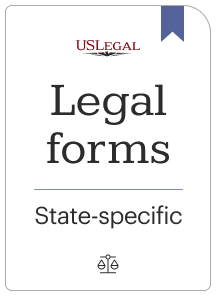

This form is a road and utility easement agreement. The Arkansas Road and Utility Easement Agreement is a legal document that grants rights to individuals or organizations to access, maintain, and use designated areas for constructing and maintaining roads, utilities, or infrastructure. This agreement ensures that the specified party has the necessary rights and permissions to occupy and utilize the land for the specified purposes. In Arkansas, there may be different types of Road and Utility Easement Agreements based on the specific needs and requirements of the parties involved. Some common variations include: 1. Public Road and Utility Easement Agreement: This type of agreement is typically established between a government entity, such as a city or county, and a utility company or contractor. It allows the utility company or contractor to access public land for installing, repairing, or maintaining utility structures like pipelines, electrical lines, or fiber optic cables. 2. Private Road and Utility Easement Agreement: This agreement is usually entered into between two private parties, where one party grants easement rights to the other for constructing or accessing a private road or utility infrastructure. This may occur when a landowner allows a neighboring property owner to access their land to install utility lines or create a shared private road. 3. Conservation Road and Utility Easement Agreement: This agreement pertains to situations where both the government and private landowners are involved. It is commonly used in conservation efforts, where private land is granted easement rights for the construction and maintenance of roads or utilities required to access and preserve protected natural areas or wildlife habitats. 5. Temporary Road and Utility Easement Agreement: This type of agreement is typically temporary and grants limited access rights to a specific area for a predetermined period. It may be used during construction projects, events, or emergencies that necessitate temporary road or utility access. When drafting an Arkansas Road and Utility Easement Agreement, it is crucial to include specific details such as the location and boundaries of the easement area, the purpose and scope of the easement, limitations and restrictions on the use of the land, maintenance responsibilities, compensation, duration of the easement, and any necessary indemnification or insurance requirements. It is advisable to consult with legal professionals specializing in real estate law or easement agreements to ensure that all relevant state laws and regulations are adhered to and to create a comprehensive document that protects the rights of all parties involved.
The Arkansas Road and Utility Easement Agreement is a legal document that grants rights to individuals or organizations to access, maintain, and use designated areas for constructing and maintaining roads, utilities, or infrastructure. This agreement ensures that the specified party has the necessary rights and permissions to occupy and utilize the land for the specified purposes. In Arkansas, there may be different types of Road and Utility Easement Agreements based on the specific needs and requirements of the parties involved. Some common variations include: 1. Public Road and Utility Easement Agreement: This type of agreement is typically established between a government entity, such as a city or county, and a utility company or contractor. It allows the utility company or contractor to access public land for installing, repairing, or maintaining utility structures like pipelines, electrical lines, or fiber optic cables. 2. Private Road and Utility Easement Agreement: This agreement is usually entered into between two private parties, where one party grants easement rights to the other for constructing or accessing a private road or utility infrastructure. This may occur when a landowner allows a neighboring property owner to access their land to install utility lines or create a shared private road. 3. Conservation Road and Utility Easement Agreement: This agreement pertains to situations where both the government and private landowners are involved. It is commonly used in conservation efforts, where private land is granted easement rights for the construction and maintenance of roads or utilities required to access and preserve protected natural areas or wildlife habitats. 5. Temporary Road and Utility Easement Agreement: This type of agreement is typically temporary and grants limited access rights to a specific area for a predetermined period. It may be used during construction projects, events, or emergencies that necessitate temporary road or utility access. When drafting an Arkansas Road and Utility Easement Agreement, it is crucial to include specific details such as the location and boundaries of the easement area, the purpose and scope of the easement, limitations and restrictions on the use of the land, maintenance responsibilities, compensation, duration of the easement, and any necessary indemnification or insurance requirements. It is advisable to consult with legal professionals specializing in real estate law or easement agreements to ensure that all relevant state laws and regulations are adhered to and to create a comprehensive document that protects the rights of all parties involved.